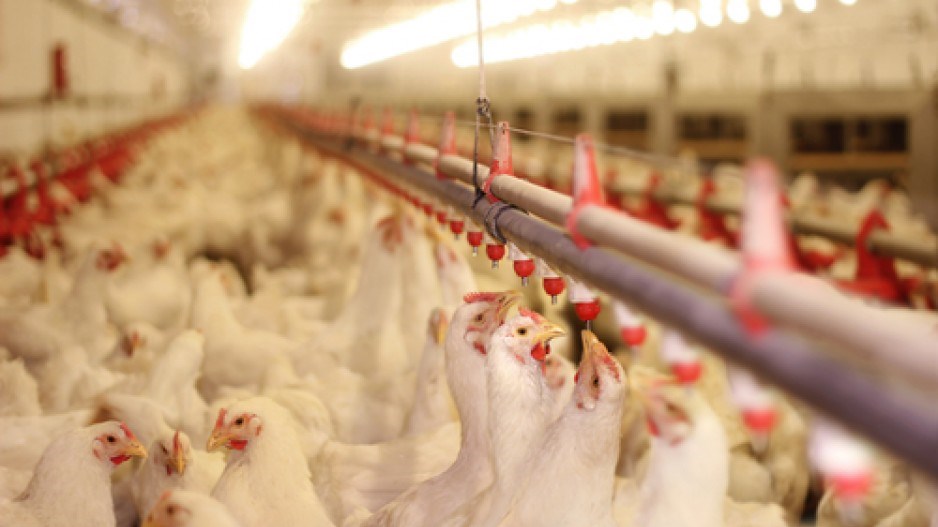Poultry farms in Western Canada saw few cases of the disease this spring, but the reasons continue to remain unclear
It was a quiet spring for avian influenza outbreaks at commercial poultry operations in Western Canada.
Only two commercial operations, one each in Alberta and British Columbia, have reported infections, compared with the dozens hit in 2022 in both provinces. Saskatchewan and Manitoba have seen no cases so far this year.
Last year, a highly pathogenic strain of avian influenza caused more than 7.5 million birds to be culled.
Despite the calmer situation, researchers are warning the virus is unlikely to have dissipated and producers should remain vigilant as the fall approaches and the migratory birds, which have spread the bird flu across the Americas, return.
Dr. Tony Redford, poultry researcher with B.C.’s Ministry of Agriculture, said it’s unclear why there are fewer cases this spring in commercial farms, following a winter when many populations of migratory birds died of the bird flu.
“I don’t know if it has been looked at too much but part of our theory in how it’s being spread is that when it rains, some of the groundwater movement could potentially move around the virus on the land. But there is not a lot of research into that,” he said.
The hot, dry spring in Western Canada could be a reason for the lack of cases. However, the virus is likely still able to be transmitted, even as surveillance of wild bird populations has shown a drop in cases.
“Hopefully, (wild populations) are developing enough immunity to help clear the virus or, if they are getting a small dose, they aren’t affected at all. But the caveat to that is some of the birds like mallards and some other waterfowl might have immunity but they are still able to carry it and shed it,” he said.
Canadian and American commercial operators are not in complete agreement with vaccinating commercial poultry, even though some European countries are moving toward that treatment, said Redford.
A problem with vaccination is it renders blood tests on commercial birds inconclusive because tests show antibodies are present in vaccinated birds, making it difficult to tell the difference between vaccinated poultry and infected birds.
“It kind of ruins your serology testing or you’ll have to have more specific testing to be able to determine a field strain antibody versus a vaccine strain. (Vaccination) doesn’t necessarily get rid of the virus. If the virus gets into a flock, they can still be persistently infected and shedding even if they are not showing severe symptoms,” he said. “If we are trying to still have our disease-free status, that would affect that as well, which obviously affects trade.”
Ontario Veterinary College researcher Shayan Sharif said the school is looking at vaccination possibilities and some of the initial resistance to avian influenza vaccines is deteriorating as virus has spread to mammals.
As with Redford, Sharif said it’s still not known why the virus’s impact on western Canadian operations has been lighter this spring.
“I call this our peace time. There is going to be a war time probably coming up in the fall. I hope I am mistaken, and I hope that I’m wrong…. But I do think this is going to come back,” he said. “Is it going to come back with a vengeance? Is it going to be as bad as previous years? I think time will tell.”
From a global perspective, avian influenza is not only continuing but adapting and infecting a wide range of not just scavenging animals but those that share the same environments as wild birds.
“That is really disconcerting because maybe it’s killing less avian but it’s getting adapted to mammals,” he said.
Clinical experiments using ferrets have shown in the laboratory that mammals can transmit the virus between each other rather than catching it independently from birds, raising questions as to how far avian influenza can spread and adapt.
“The short answer is we don’t really know,” said Sharif.
While vaccinations of commercial poultry are still a way away, he added France and the Netherlands are heading in that direction and in the coming months, there will be ongoing discussions in Canada on whether it will follow suit.
The vaccines being developed in Canada are neither new nor novel, Sharif stressed, and would build on existing platforms.
This year’s avian influenza hotspot has been Quebec, which was largely spared in 2022 from the type of impacts to commercial operations that hit Alberta and B.C. in the spring and fall, respectively. The province has reported 23 commercial operations infected this year but not any flocks since early May.




